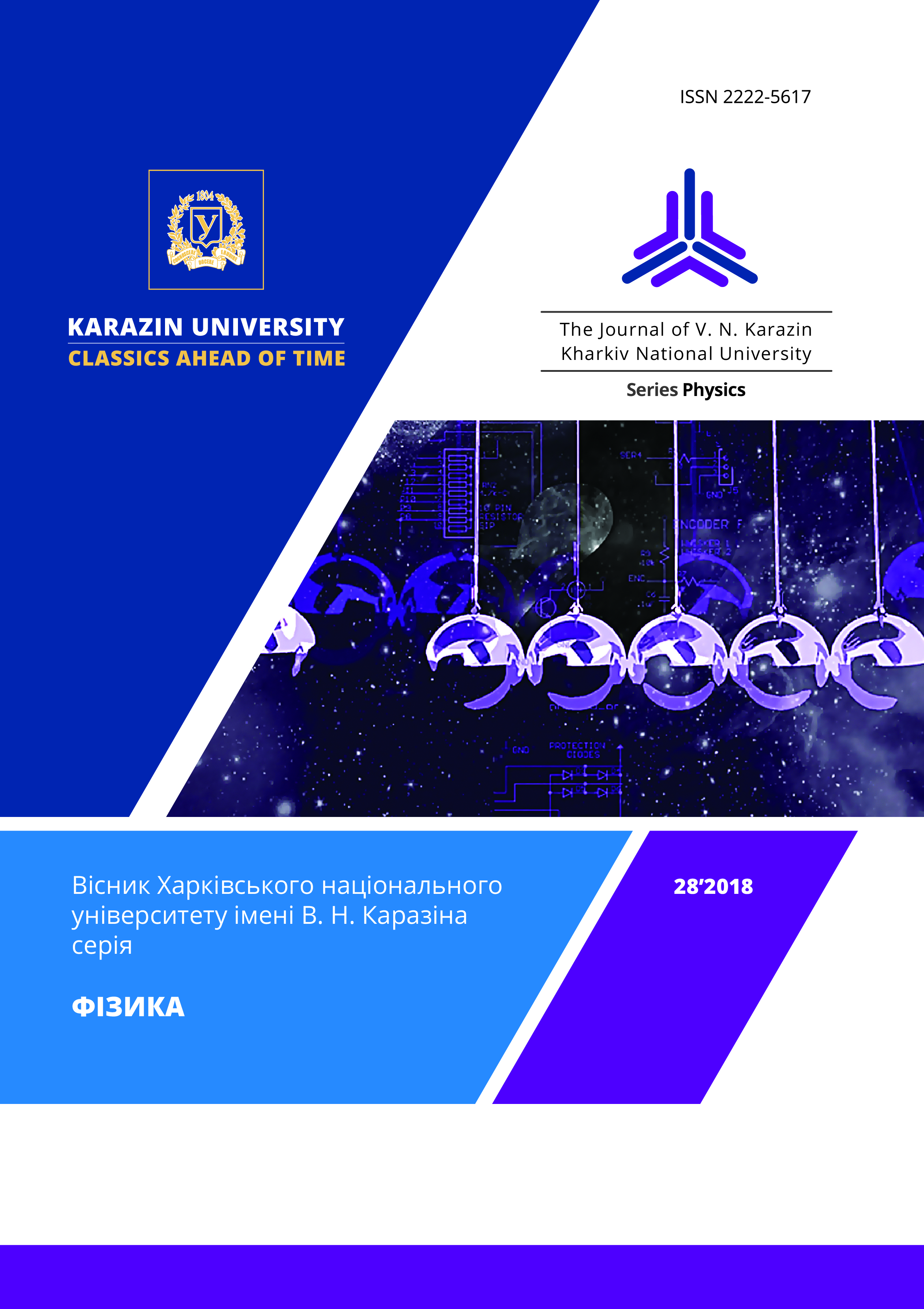Temperature effects in nanostructured carbon-copper films deposited by magnetron sputtering
Abstract
Nanostructured carbon-copper films were deposited by direct current magnetron sputtering of composed graphite-copper or pure graphite and copper targets. The evolution of film structure on annealing in a vacuum at temperatures in the range of 300-600oC and upon deposition at 600oC has been studied by transmission and scanning electron microscopy and electron diffraction. Three types of thin annealed films were studied, namely: mixed C+Cu (type 1), two-layer C/Cu (type 2), and nanostructured (type 3). Also two types of thick films were prepared by deposition of mixed carbon-copper film onto substrate at room temperature and then annealing in a vacuum (type 4), and by deposition of mixed carbon-copper film onto pre-heated substrate (type 5).
The as-deposited films of type 1 (containing 8-22 at. % Cu) exhibited amorphous structure with copper atoms uniformly distributed over the film volume. Annealing in the range of 300-600oC resulted in precipitation of copper into the set of particles with average particle size depending on copper content and annealing temperature, and in development of diffusion coalescence within the set of particles. The coalescence occurred more slowly than it is predicted by the theory. Upon annealing at 600oC of type 2 film the copper layer disintegrated and the set of copper particles formed. The diffusion coalescence of particles also took place. Like type 1 film, in the type 2 film the coalescence occurred also more slowly than it is predicted by the theory. The structure of type 3 film was stable upon annealing at 600oC for period up to 15 h. The specific microstructure of carbon film-matrix greatly slowed down the diffusion coalescence of copper particles in the films of types 1 and 2 and prevented it in type 3 film.
Upon annealing of the film of type 4 the amorphous structure of carbon matrix preserved, and the set of copper particles formed on its surface. The film deposited onto pre-heated substrate (type 5) exhibited clearly columnar structure of carbon matrix with the set of copper particles located both in the film volume and on its surface.
Downloads
References
2. J.M. Ting, H. Lee, DLC composite thin films by sputter deposition, Diamond Relat. Mater., 11 (2002) 1119-1123.
3. Gy. J. Kovács, G. Sáfrán, O. Geszti, T. Ujvári, I. Bertóti, G. Radnóczi, Structure and mechanical properties of carbon-nickel and CNx-nickel nanocomposite films, Surf. Coat. Technol., 180-181(2004) 331-334.
4. D.Y. Wang, K.W Weng, S.Y. Hwang, Study on metal-doped diamond-like carbon films synthesized by cathodic arc evaporation, Diamond Relat. Mater., 9 (2000) 1762-1766.
5. F.C. Fonseca, A.S. Ferlauto, F. Alvarez, G.F. Goya, R.F. Jardim, Morphological and magnetic properties of carbon-nickel nanocomposite thin films, J. Appl. Phys., 97 (2005) 0443131-7.
6. H. Hofsäss, H. Binder, T. Klumpp, E. Recknagel, Doping and growth of diamond-like carbon films by ion beam deposition, Diamond Relat. Mater., 3 (1993) 137-142.
7. P.A. Chen, Characteristics of copper-incorporated amorphous carbon film, Thin Sol. Films, 182 (1989) 261-263.
8. Y. Pauleau, F. Thièry, Deposition and characterization of nanostructured metal/carbon composite films, Surf. Coat. Technol., 180-181 (2004) 313-322.
9. J. Jiao, S. Seraphin, Carbon encapsulated nanoparticles of Ni, Co, Cu, and Ti, J. Appl. Phys., 83 (1998) 2442-2448.
10. T. Cabioc’h, A. Naudon, M. Jaouen, D. Thiaudiére, D. Babonneau, Co-sputtering C-Cu thin film synthesis: microstructural study of copper precipitates into a carbon matrix, Phil. Mag., B 79 (1999) 501-516.
11. A.A. Onoprienko, V.V. Artamonov, I.B. Yanchuk, Effect of magnetron discharge power on the resistivity and microstructure of carbon films. Surf. Coat. Technol., 200 (2006) 4174-4178.
12. A.A. Onoprienko, V.V. Artamonov, I.B. Yanchuk, Effect of deposition and anneal temperature on the resistivity of magnetron sputtered carbon films, Surf. Coat. Technol., 172 (2003) 189-193.
13. I.M. Lifshitz, V.V. Slyozov, The kinetics of precipitation from supersaturated solid solutions, J. Phys. Chem Sol., 19 (1961) 35-50.
14. Ya.E. Geguzin, Yu.S. Kaganovsky, V.V. Slyozov, Determination of the surface heterodiffusion coefficient by the method of mass transfer, J. Phys. Chem Sol., 30 (1969) 1173-1178.
15. A. A. Onoprienko, N. I. Danilenko, I. A. Kossko, Structure evolution on annealing of copper-doped carbon film, Thin Sol. Films, 515 (2007) 6672-6675.








3.gif)
